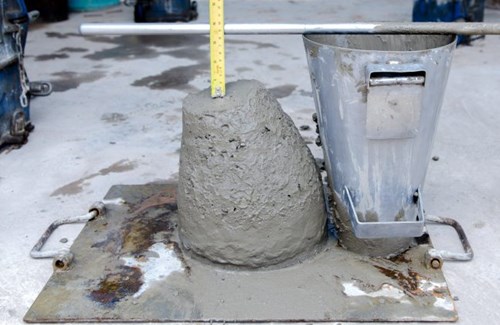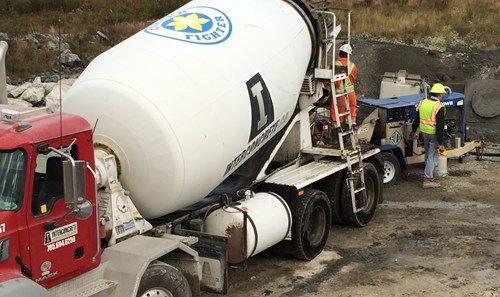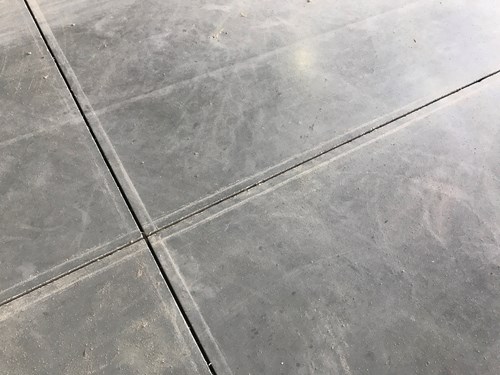As the knowledge, testing and experience of using fiber-reinforced concrete continues to grow for concrete applications, their successful use and benefits are now being fully realized through projects including floor systems, precast concrete, walls, shotcrete, and pavement systems. However, many questions continue to arise from ready-mix producers and contractors who are still learning the benefits of how fiber reinforced concrete works and the slight changes to concrete mixtures, finishing techniques, placement methods, and testing requirements that come with using this composite material.
Euclid Chemical has created a series of Technical Bulletins on a variety of topics related to the successful use of Fiber-Reinforced Concrete (FRC). These documents are provided as a service to the Ready-Mix Concrete and Concrete Contracting community to answer questions that often arise on topics such as fiber types, mixing tips, finishing methods, pumping, and joint spacing. Other documents on related fiber topics are also available in addition to helpful advice on chemical admixtures and construction products. The most common questions that arise from the construction community on the use of fiber-reinforced concrete include the topics as described here:
How does fiber use impact slump or air content of concrete?
 Fiber types, dosages and mix design all play a role in how the slump, or measured flow, of concrete will behave. However, when combined with proper admixture use, fiber-reinforced concrete can be mixed and placed with the same consistency as normal concrete. Air contents are generally not affected by fiber use unless additional water is added to a mix to increase slump.
Fiber types, dosages and mix design all play a role in how the slump, or measured flow, of concrete will behave. However, when combined with proper admixture use, fiber-reinforced concrete can be mixed and placed with the same consistency as normal concrete. Air contents are generally not affected by fiber use unless additional water is added to a mix to increase slump.
FC-4: FAQs on Slump, Air Content and Compressive Strength when using TUF-STRAND SF
Are steel fibers and synthetic fibers used in the same applications?
 Micro-synthetic fibers, which have been around for over 40 years, are generally used for the control of plastic shrinkage cracks only and are used at low dosages. Steel fibers and macro-synthetic fibers are typically used at higher volumes and can be considered for use in similar applications to replace temperature and shrinkage reinforcement and limited structural applications.
Micro-synthetic fibers, which have been around for over 40 years, are generally used for the control of plastic shrinkage cracks only and are used at low dosages. Steel fibers and macro-synthetic fibers are typically used at higher volumes and can be considered for use in similar applications to replace temperature and shrinkage reinforcement and limited structural applications.
FC-5: FAQs on Steel Fibers vs. Synthetic Fibers
How can fiber balling and other mixing problems be eliminated?
 Most commercially available fiber types can be successfully mixed and placed in concrete provided the correct concrete mix design has been used and recommended fiber addition methods, as directed by the manufacturer, are followed.
Most commercially available fiber types can be successfully mixed and placed in concrete provided the correct concrete mix design has been used and recommended fiber addition methods, as directed by the manufacturer, are followed.
FC-6: FAQs on Fiber Types and Mixing Problems
What are the common issues and remedies for pumping and finishing FRC?
 Fiber-reinforced concrete can be easily pumped and finished provided that a correct mix design is developed prior to fiber addition and that precautions are taken to not over-finish a concrete surface. There is no guarantee that fibers will not be visible on a concrete surface but with proper techniques and fiber selection, finished surfaces can be achieved with the same appearance as plain concrete.
Fiber-reinforced concrete can be easily pumped and finished provided that a correct mix design is developed prior to fiber addition and that precautions are taken to not over-finish a concrete surface. There is no guarantee that fibers will not be visible on a concrete surface but with proper techniques and fiber selection, finished surfaces can be achieved with the same appearance as plain concrete.
FC-10: FAQs on Pumping and Finishing Fiber Reinforced Concrete
Can floor joint spacing be extended with fiber use?
 There are successful examples and significant research in the concrete industry that support the increase of control joint spacing in floor design when using fibers, specifically macro-synthetic and steel fibers. However, most of this work is also in combination with improvements in concrete mix designs using advanced chemical admixtures and proper placement and curing practices.
There are successful examples and significant research in the concrete industry that support the increase of control joint spacing in floor design when using fibers, specifically macro-synthetic and steel fibers. However, most of this work is also in combination with improvements in concrete mix designs using advanced chemical admixtures and proper placement and curing practices.
FC-13: FAQs on Floor Joint Spacing with Fibers
For a full list of these Technical Bulletins, please visit our Technical Bulletin page.

ABOUT MICHAEL MAHONEY
Michael Mahoney, M.A.Sc., P.Eng., is the Director of Marketing and Technology for Fiber Reinforced Concrete at Euclid Chemical. Michael is a Fellow of the American Concrete Institute and a member of the National Pre-Cast Concrete Association and American Society for Testing and Materials. He is also a Past President for the Fiber Reinforced Concrete Association and has been with Euclid Chemical for 17 years. Prior to this, he worked as a research professional for 7 years studying fiber reinforced concrete at the Technical University of Nova Scotia in Halifax, Canada.